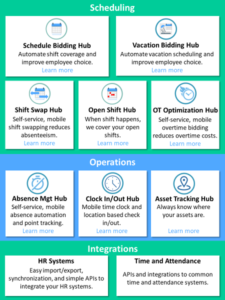
Credit PxFuel
What do you do when everyone wants Christmas off?
Some businesses can have holidays off for all employees. Those lucky workers, typically white-collar, don’t have to be there to answer the phones or keep the business operating. Many businesses have to or choose to operate through the holidays. For some businesses, holidays are the busiest and most profitable days of the year.
In the US, employers are not required to give any holidays off, pay overtime for holidays, or have holidays off count towards overtime calculations. Only if your company has annual sales of more than 500K you are even required to pay overtime (+50% for hours over 40).
However, most companies provide some holiday time off as part of their benefits package to attract/retain employees. On average, US employees receive 7.6 paid holidays. 96% of US Businesses provide paid time off for New Years Day, Memorial Day, Independence Day, Labor Day, Thanksgiving, and Christmas. Also 57% of companies offer some form of holiday premium for holiday workers.
So what if the holidays are the busiest times for your business and you need more employees rather than fewer? Airlines face this problem in the transportation industry. There is a spike in travel on and around the holidays. Airlines deal with this problem in a unique way. First, they give employees vacation weeks for the number of holidays they typically have (typically ten days or two weeks). Next they have employees bid based on seniority for the weeks they will get off. The company sets the number of vacation weeks available for each week of the year in the bidding group, naturally reducing the weeks for the busiest times of the year. Employees bid on the weeks they want based on seniority.
Vacation bidding is where ShiftX comes in to automate the process. Administrators pick a group, allocate weeks, and configure the bid parameters. Employees can enter preferences and let the system select vacations based on their preferences in order of seniority or actively bid during their bidding window. There is complete transparency in real-time for the weeks allocated and weeks that are available.
ShiftX saves a lot of time for administrators and allows employees to bid from anywhere via their mobile devices. With ShiftX, you get fair and transparent vacation allocation for your entire company even when you can’t give everyone the holidays off.




Recent Comments